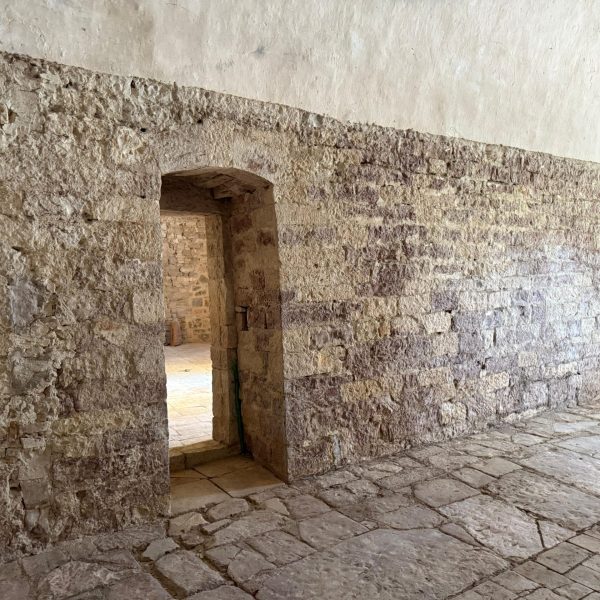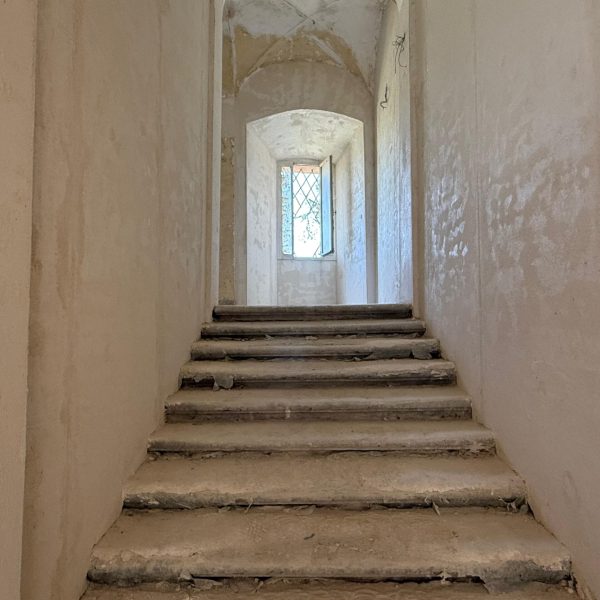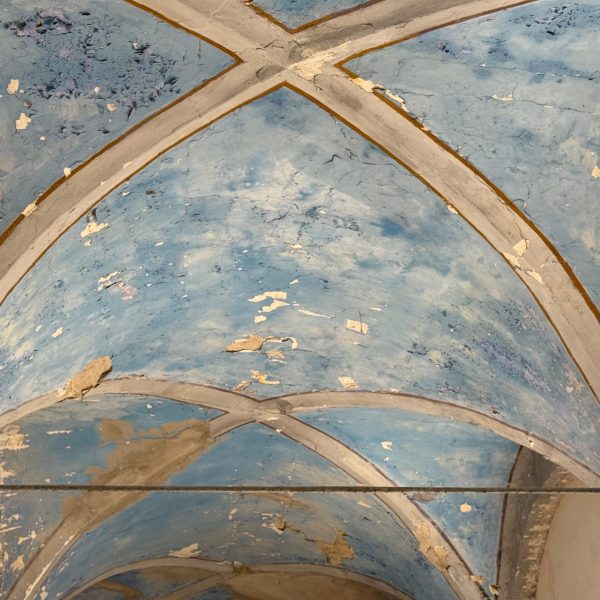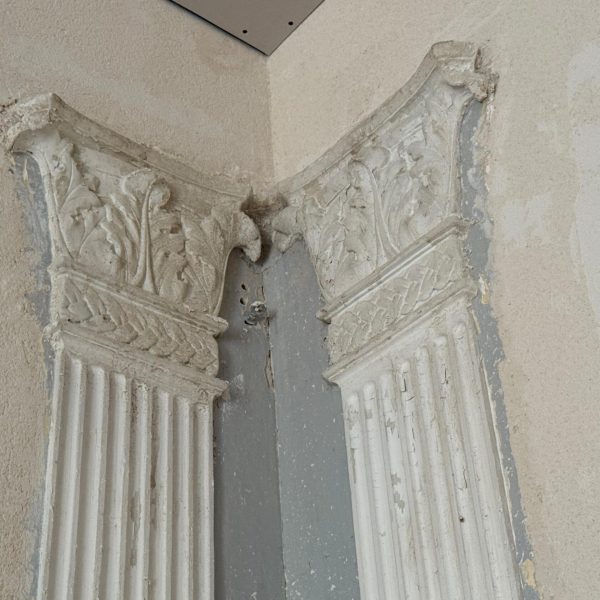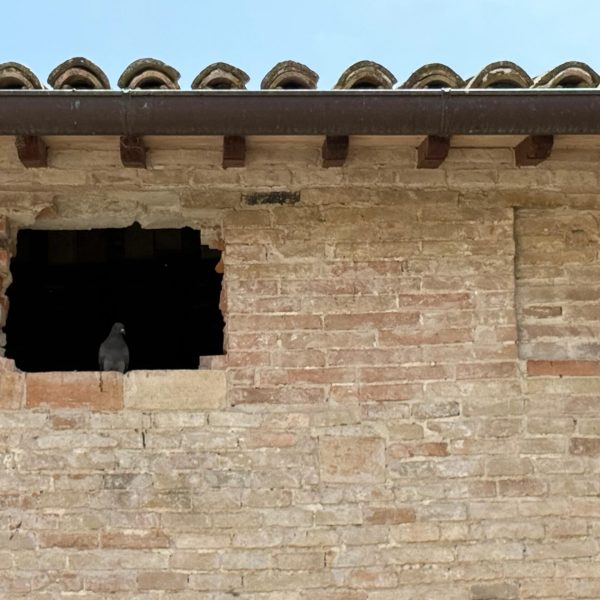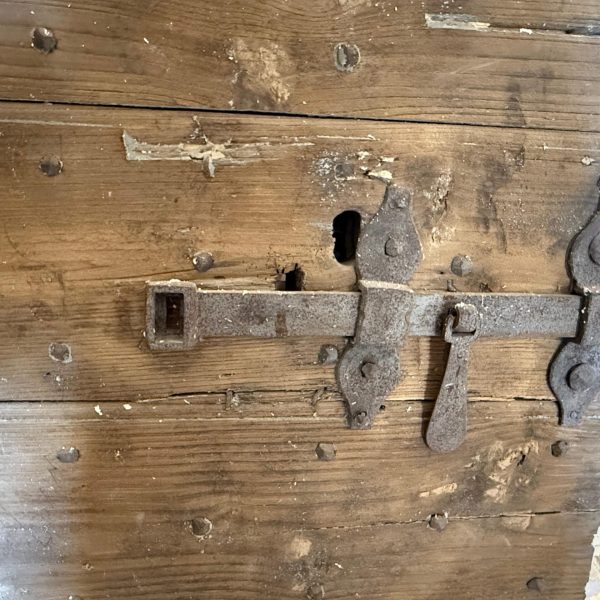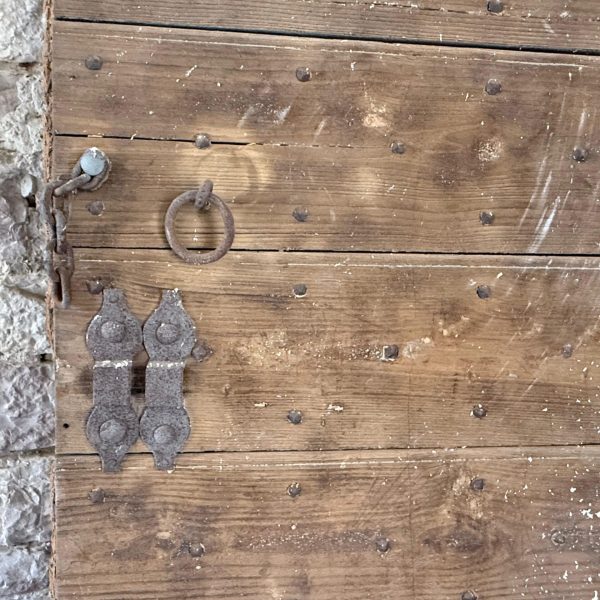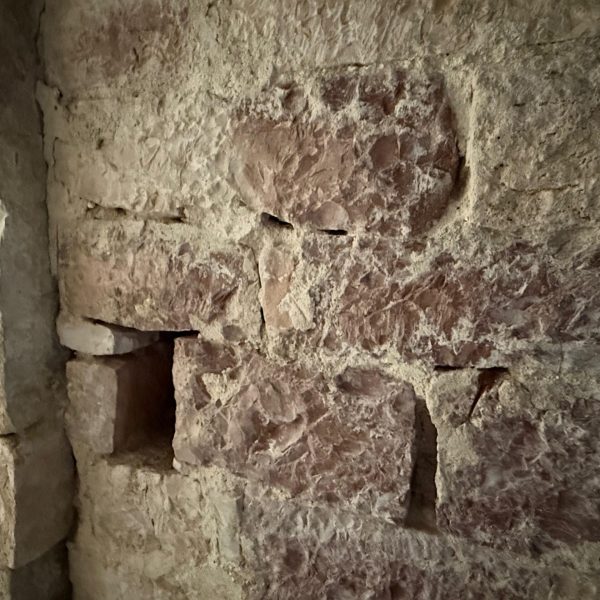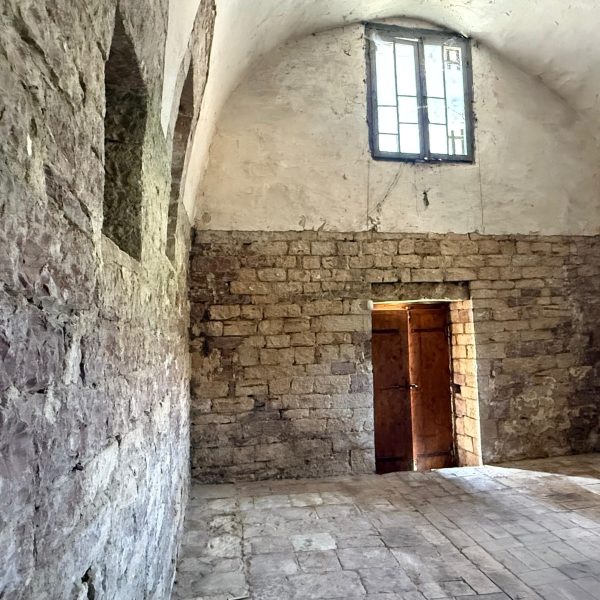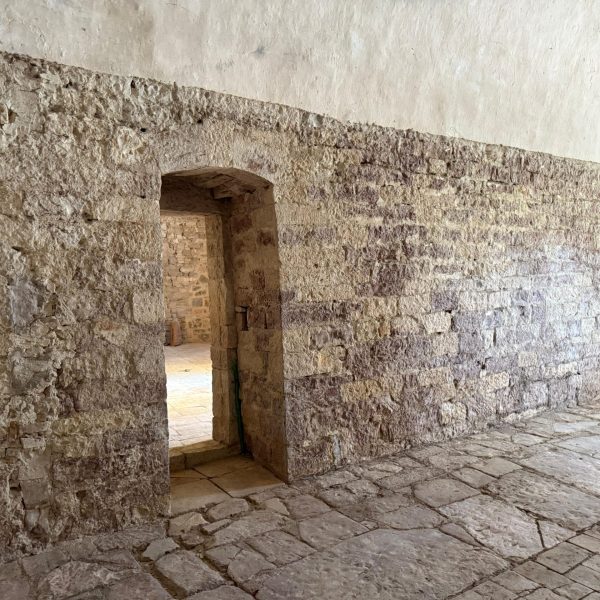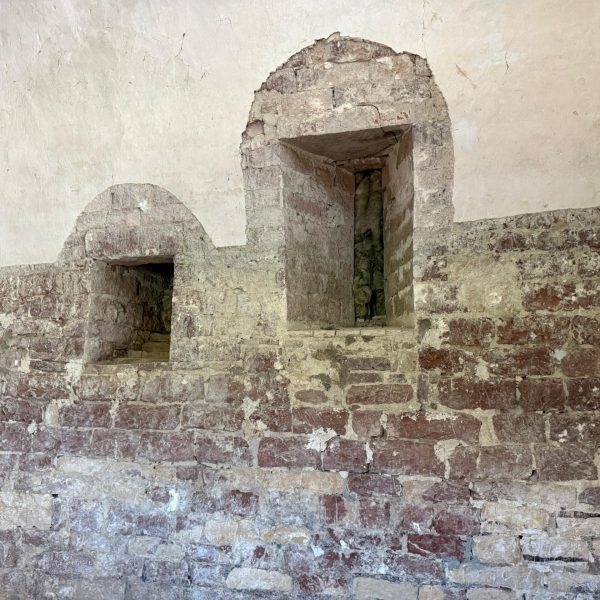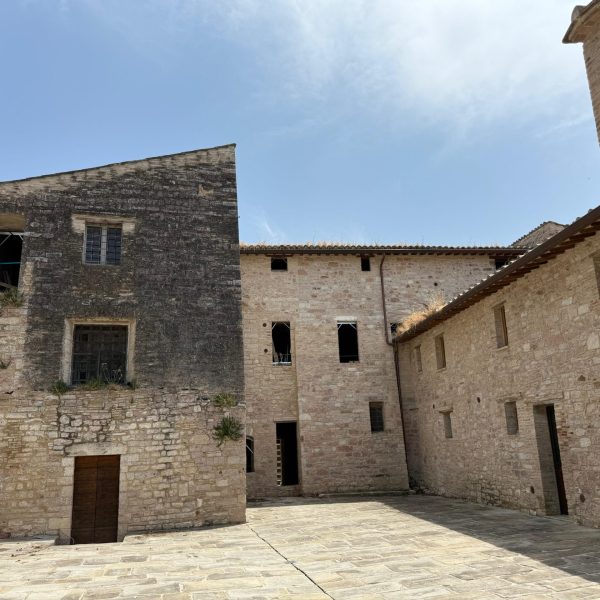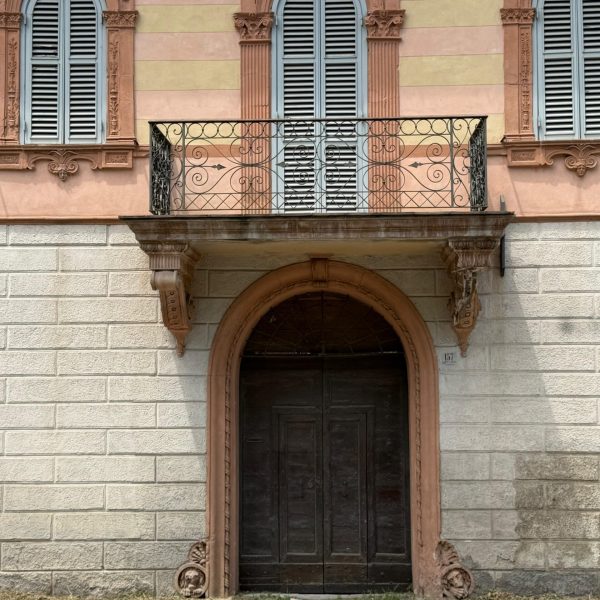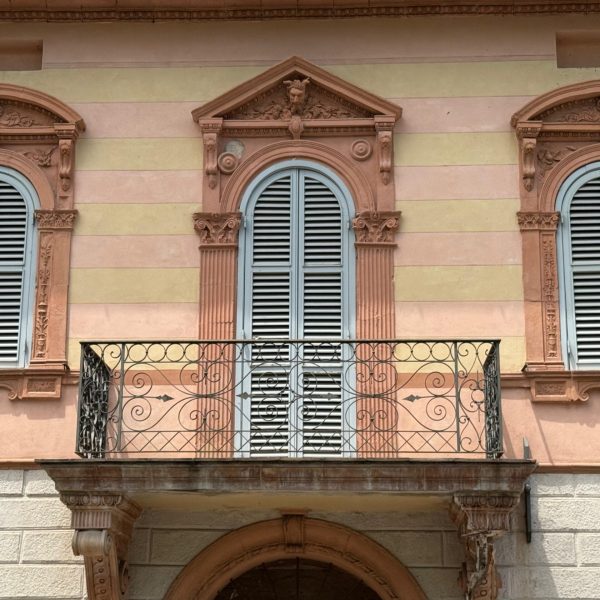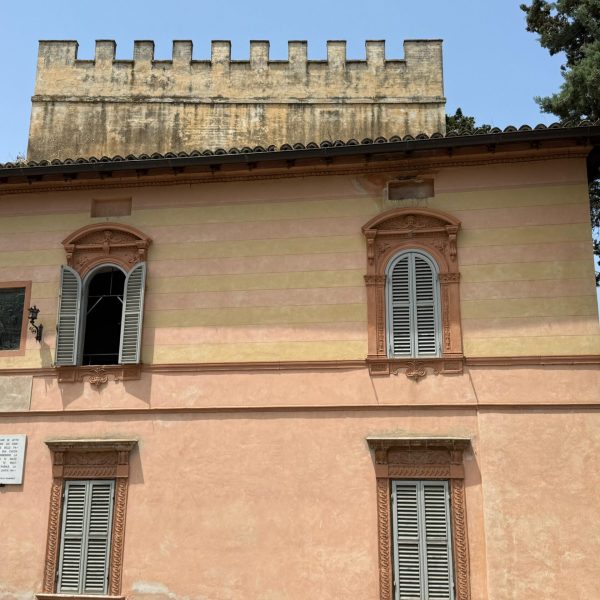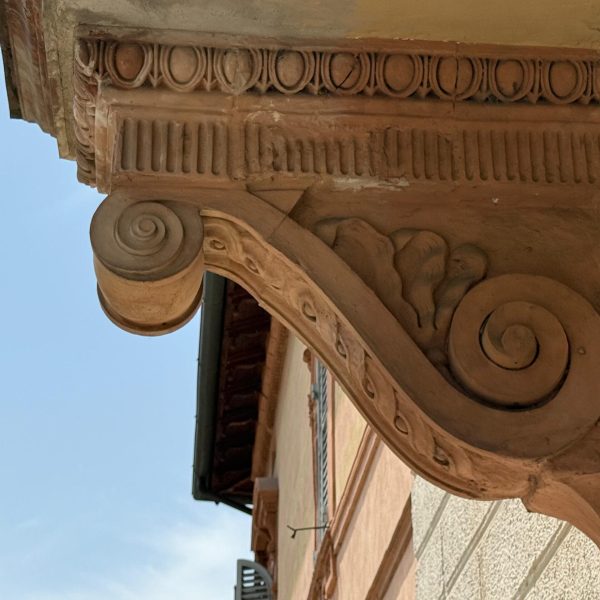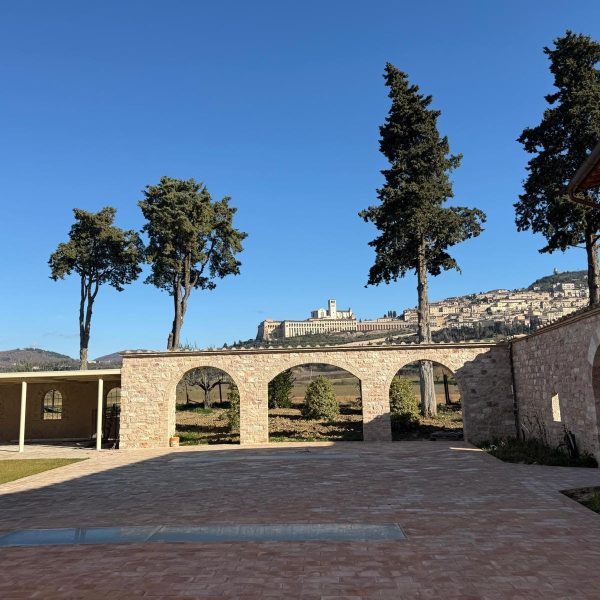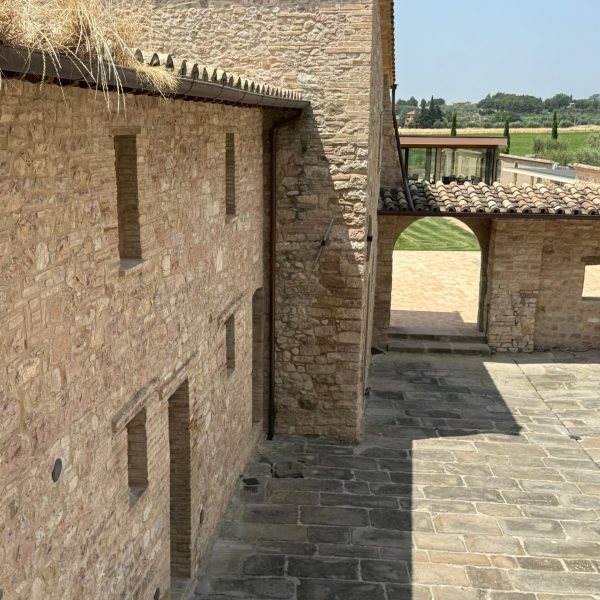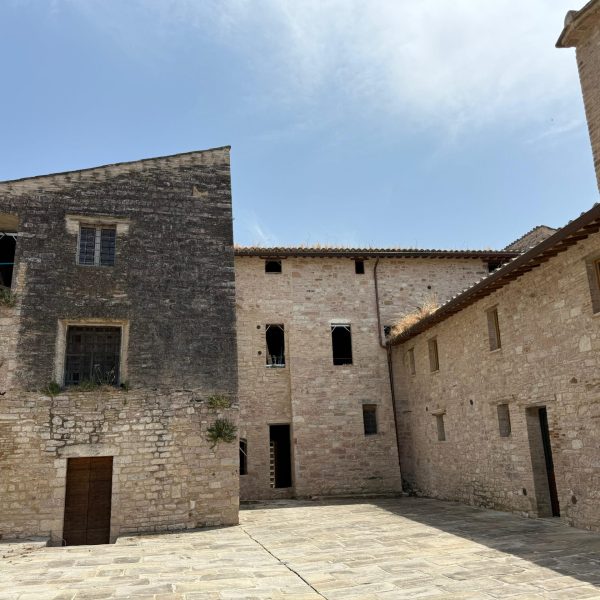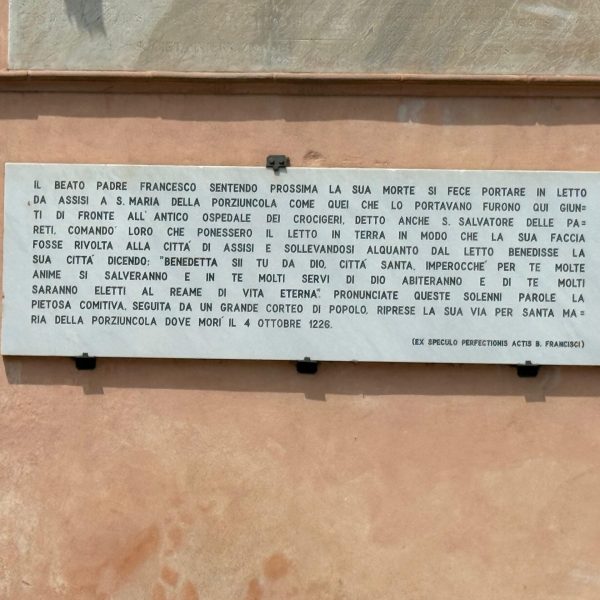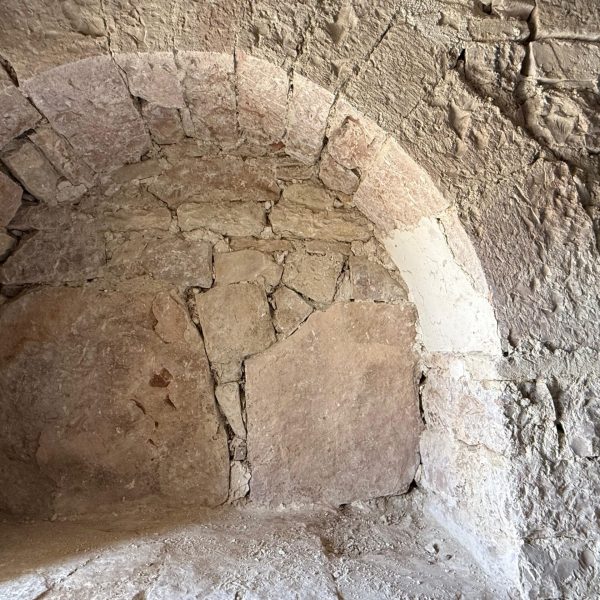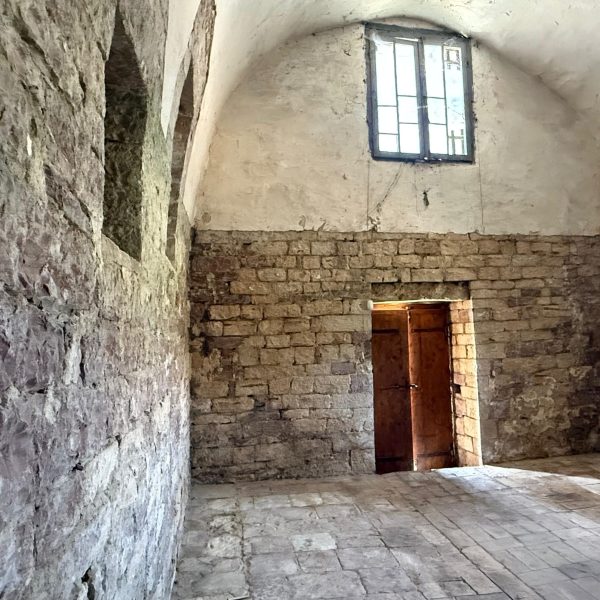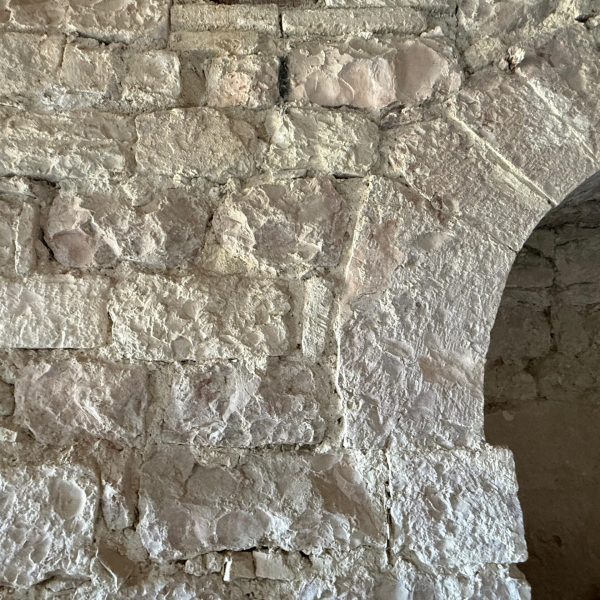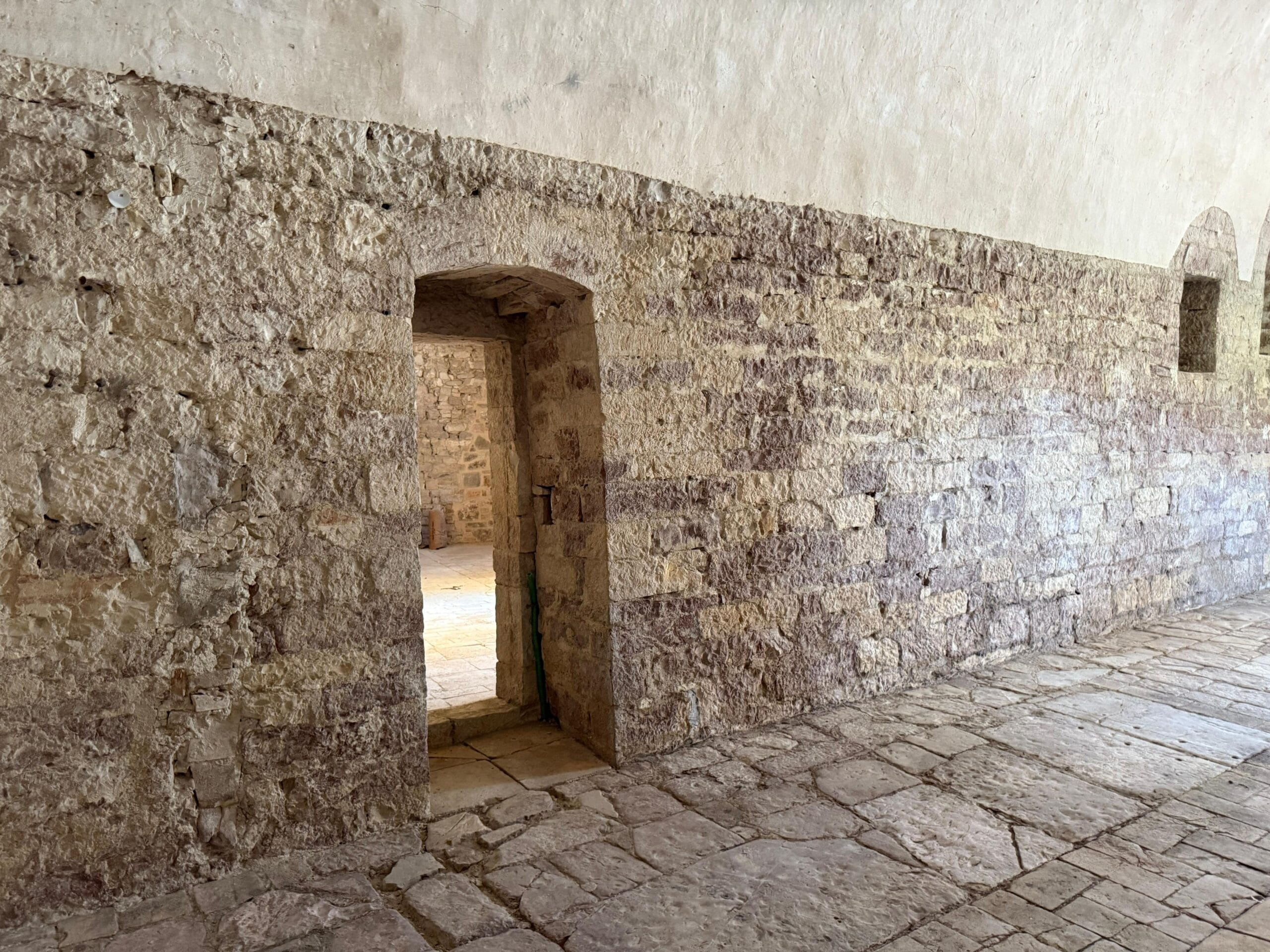
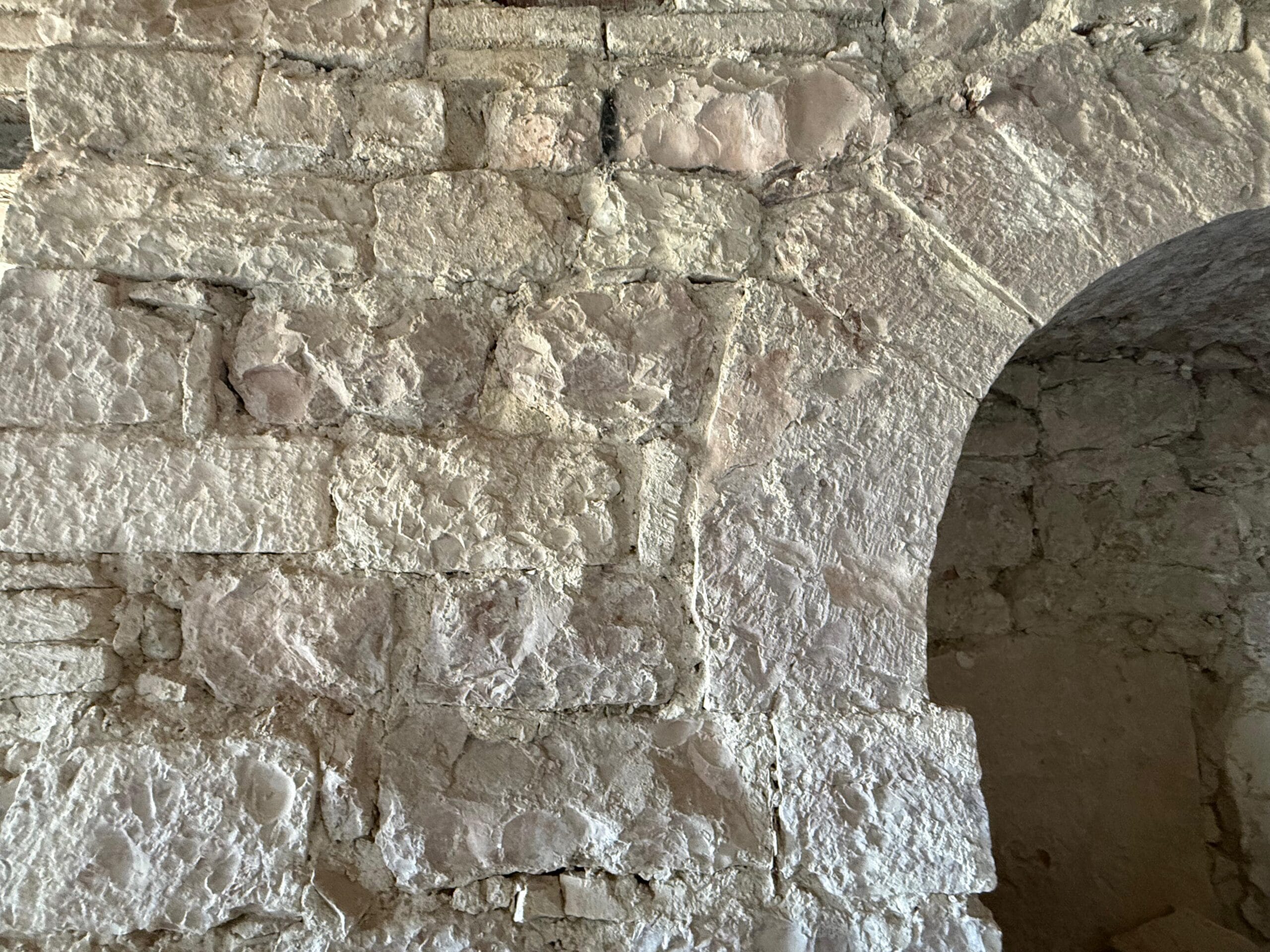
A place where
history meets
faith and beauty
A place where history meets faith and beauty, where the story of Saint Francis intersects with that of the Augustinian order: Just below Assisi, today a UNESCO World Heritage Site, stands the historic complex once known as the Ospedale delle Pareti – later Villa Gualdi.
The origins: the church of
San Salvatore delle Pareti.
Its origins go back to 1080 with the church of San Salvatore delle Pareti, dedicated to the protection of earthquake victims. or centuries it was considered a place of blessing and refuge.
The exposed pink stone still speaks today, and in the apse survives a 16th-century fresco depicting St. Augustine, St. Francis and St. Anthony.
Hospitality has long been part of its history. As early as 1193 it appears in documents as the “Hospitale de Pariti”, a refuge attached to the church and entrusted to the Bishop of Assisi,
welcoming pilgrims and travellers returning from distant, often perilous journeys.
According to the Speculum Perfectionis, it was here in September 1226, on the way to the Porziuncola, that St. Francis paused one last time to bless the city of Assisi before his death.
While still residing in the bishop’s palace, the Saint was warned, both by the Holy Spirit and by
doctors, that his death was imminent. Feeling his body’s strength worsening and failing, he had himself carried on a stretcher to the Porziuncola to end the life of the body in the place where he had begun to experience the light and life of the soul.
When they arrived at the “Ospedale delle pareti” (Villa Gualdi), which stands halfway between
Assisi and the Porziuncola, a place Francis had visited many times for visits to the sick, he told the
bearers to put down the litter. Having now almost completely lost his sight because of the long and serious illness of his eyes, he turned his face towards Assisi and lifting himself up a little, blessed the city, saying:
“
Lord, I believe that in ancient times this city was a dwelling place for unjust men. Now I see that, in Thy immense mercy, at the moment chosen by Thee, Thou hast shown her Thy special
superabundant piety, and solely out of Thy goodness hast chosen her to be the place and dwelling
place of those who know Thee in truth, give glory to Thy holy name, and send forth to all the
Christian people a fragrance of good fame, of holy life, of true doctrine, of evangelical perfection. I beseech Thee, therefore, O Lord Jesus Christ, Father of mercies, that Thou wilt not look upon our
ingratitude, but that Thou wilt always remember the immense compassion Thou hast shown to it,
that it may always be the place and dwelling-place of those who truly know Thee and glorify Thy
blessed and glorious name for ever and ever. Amen.
”
Saint Francis of Assisi.
From 1505 to 1860, Villa Gualdi became the Monastery of St Augustine, run by the Augustinian
monks of Perugia.
It was a period of care, transformation, restoration. An underground tunnel at the Via della Porziuncola (which still exists today) connected the two properties.
In 1870, the course of history changed again: the complex was confiscated by the newly born state of Italy and in 1873, bought at auction by Signor Lorenzo Gualdi, it became a private residence, taking on the appearance of a neoclassical villa.
Its buildings returned to agricultural use.
After the earthquake of 1997, a great wound for Umbria and Assisi, the complex underwent a complete earthquake-proof renovation in accordance with the indications and constraints of the Ministry of Cultural Heritage and Activities.
Nel 2017 per l’amore profondo verso Assisi e il suo territorio la proprietà viene acquistata da un imprenditore assisiate, Giampiero Bianconi. For 6 long years, every day, he will direct the work of renovation and restoration of the unfinished parts, availing himself of local collaborators, connoisseurs of modern techniques, scholars and enthusiasts like himself of local materials, so that the complex retains the beauty, charm and emotion of past centuries.
that place is a bit of us too.
Somehow, without knowing it, we carried it inside us and one day,
by chance, we arrived there.

